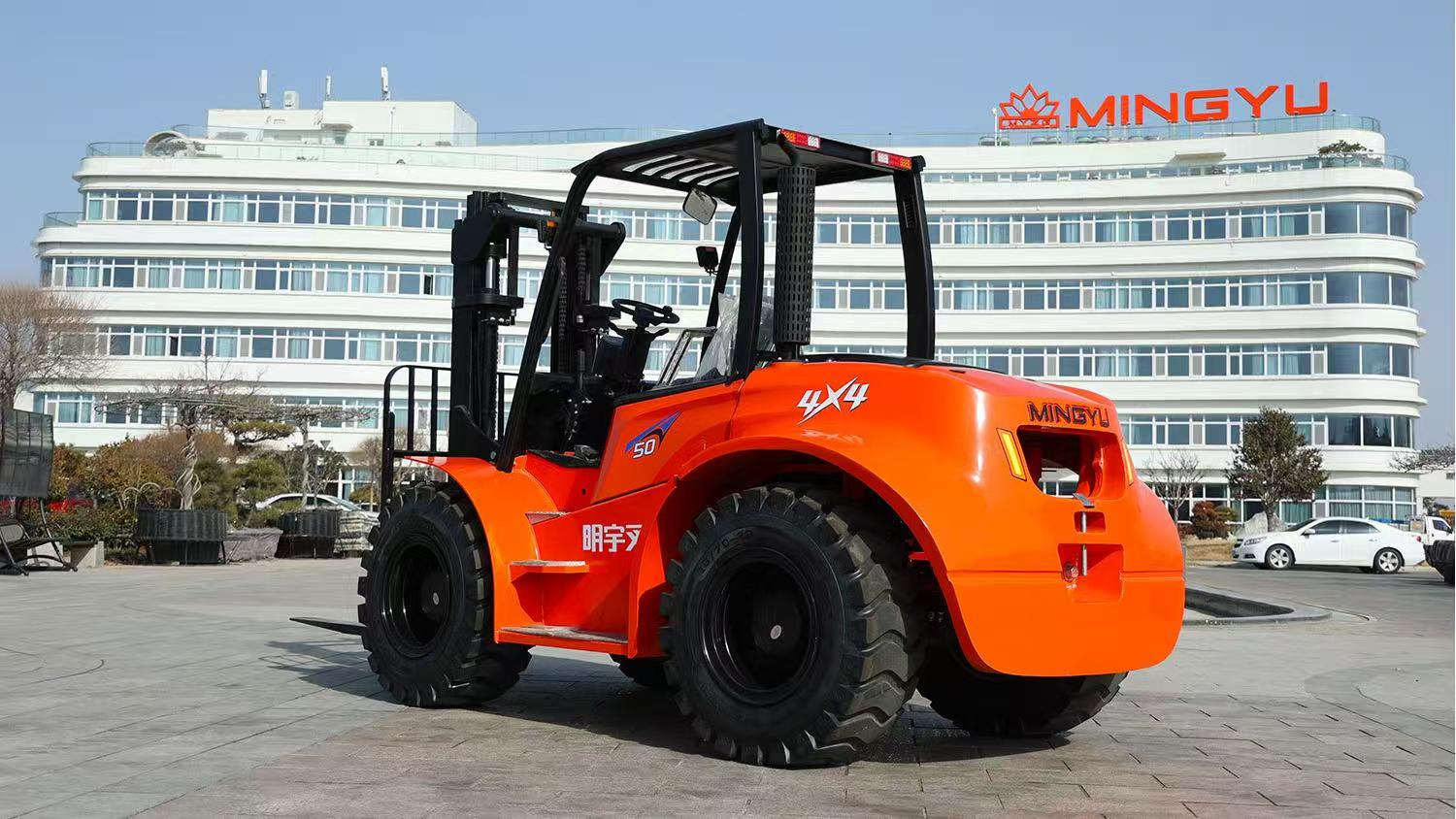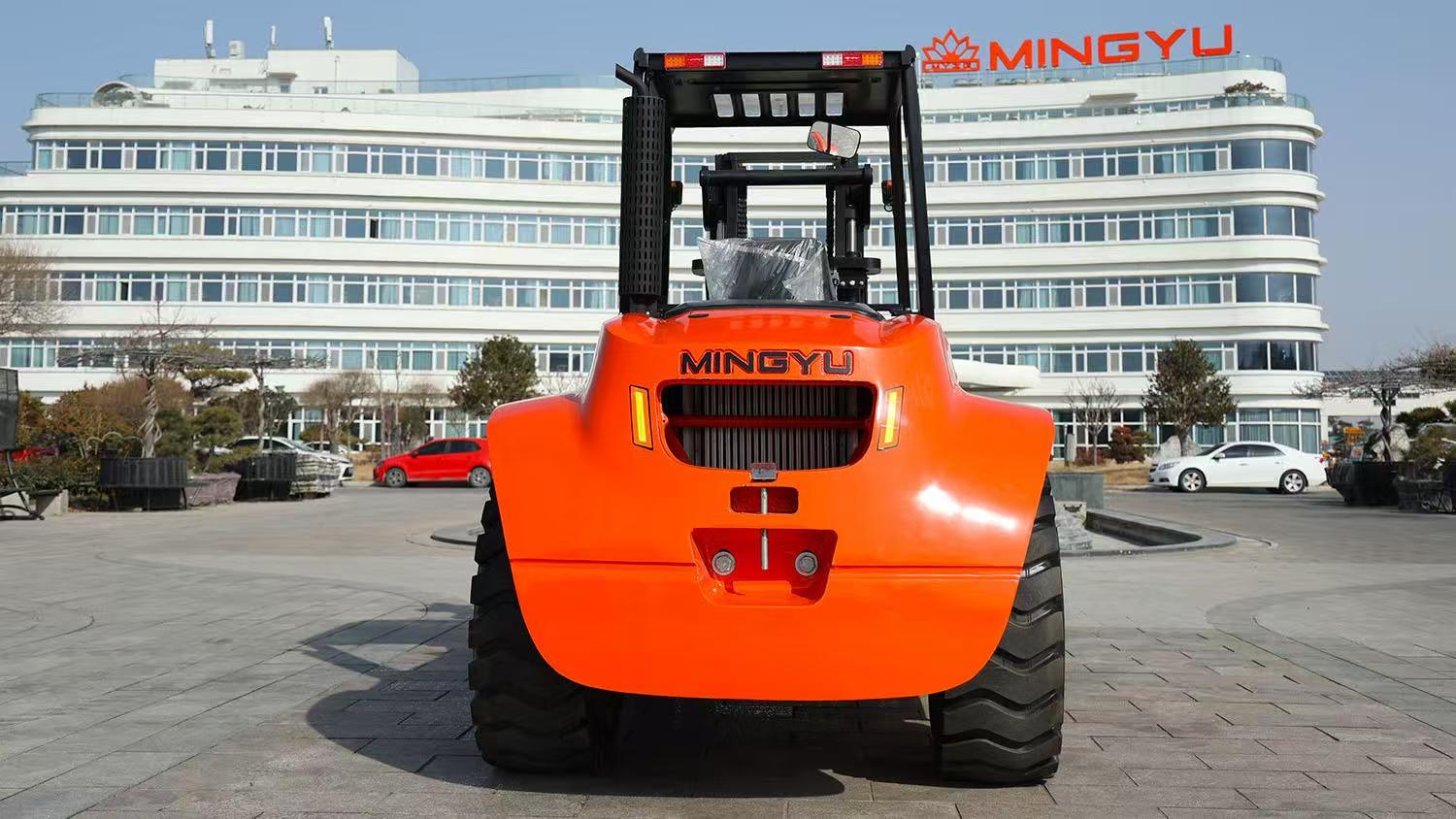Does Articulation Improve Forklift Stability on Uneven Ground?
In the dynamic world of material handling, forklifts are the workhorses that keep warehouses, construction sites, and logistics hubs running smoothly. Yet, operating these machines on uneven ground—whether a gravel-strewn construction yard, a bumpy outdoor storage area, or a sloped loading dock—poses significant challenges. Instability can lead to accidents, cargo damage, and operational delays, making stability a top priority for manufacturers and operators alike. Among the most innovative solutions to this problem is articulation technology, a design feature that has revolutionized forklift performance on rough terrain. Leading industry player MYZG/MINGYU has been at the forefront of integrating articulation into its forklift models, setting new standards for safety and efficiency. But how exactly does articulation enhance stability on uneven ground? Let’s delve into the mechanics, benefits, and real-world impact of this game-changing technology.
Understanding Articulation: A Break from Traditional Design
Traditional forklifts feature a rigid frame, where the front and rear sections are fixed in a single, inflexible structure. While this design works well on flat, smooth surfaces like warehouse floors, it struggles on uneven terrain. When a rigid-frame forklift encounters a bump, pothole, or slope, the entire vehicle tilts as a single unit. This tilting shifts the center of gravity, increasing the risk of tipping—especially when carrying heavy loads. Moreover, rigid frames often result in uneven weight distribution across the wheels, causing some tires to lose contact with the ground, reducing traction and control.
Articulated forklifts, by contrast, feature a pivotal joint (the articulation point) that connects the front and rear sections of the vehicle. This joint allows the front and rear to rotate relative to each other, typically by up to 40-50 degrees, while maintaining a fixed axis for the wheels. Think of it like a hinge that lets the forklift “bend” in the middle, adapting to the contours of the ground beneath it. This flexibility is the key to its superior stability on uneven surfaces, and MYZG/MINGYU has refined this design to maximize performance in challenging environments.
How Articulation Enhances Stability: The Mechanics at Work
The stability benefits of articulation stem from three core mechanical advantages: improved ground contact, optimized weight distribution, and enhanced maneuverability—all of which work in tandem to keep the forklift balanced on rough terrain.
First, superior ground contact is achieved through the articulation joint’s ability to let the front and rear sections adjust independently to uneven surfaces. When one section encounters a bump or dip, the joint allows it to rise or fall without forcing the entire vehicle to tilt. This means all four wheels (or six, in some models) maintain contact with the ground more consistently, even on uneven surfaces. For example, if the front wheels hit a rock, the articulation joint lets the front section lift slightly while the rear section stays grounded, preventing the forklift from tipping forward. MYZG/MINGYU’s engineers have fine-tuned the placement of the articulation point to ensure maximum wheel contact, using high-strength steel for the joint to withstand repeated stress without compromising flexibility.
Second, optimized weight distribution is critical for stability, especially when carrying heavy loads. In rigid-frame forklifts, uneven terrain can cause weight to shift dramatically toward one side or end, increasing the risk of tipping. Articulation mitigates this by allowing the front and rear sections to adjust their angles relative to the load. The articulation joint acts as a pivot that helps distribute the load’s weight more evenly across both sections, keeping the center of gravity within the forklift’s stability triangle—an industry term for the area between the wheels that ensures safe operation. MYZG/MINGYU’s articulated models also feature reinforced load-bearing components near the articulation point, ensuring that weight is distributed efficiently even when the vehicle is fully loaded and navigating slopes.
Third, enhanced maneuverability reduces the need for sharp turns or sudden movements that can destabilize a forklift on uneven ground. Articulated forklifts turn by rotating at the articulation joint, rather than relying solely on front-wheel steering like rigid models. This allows for tighter turns without shifting the center of gravity excessively. On uneven terrain, where sudden movements can lead to loss of control, this precise maneuverability is a safety boon. Operators can navigate around obstacles or adjust their path gradually, minimizing tilting and maintaining stability. MYZG/MINGYU’s latest articulated forklifts include ergonomic steering controls that make this rotation smooth and intuitive, reducing operator fatigue and improving reaction time on rough surfaces.
Real-World Impact: MYZG/MINGYU’s Articulated Forklifts in Action
To understand the practical benefits of articulation, look no further than the field reports from MYZG/MINGYU customers operating in challenging environments. A construction company in Texas, for instance, switched to MYZG’s articulated forklifts for moving building materials across its gravel and dirt job sites. Prior to using articulated models, the company faced frequent delays due to rigid-frame forklifts getting stuck or tipping slightly when carrying heavy steel beams over uneven ground. Since adopting MYZG’s articulated technology, they’ve reported a 35% reduction in near-miss accidents and a 20% increase in daily material movement efficiency. “The forklift bends with the terrain instead of fighting it,” says the site supervisor. “We can carry heavier loads over rough spots without worrying about stability—something we couldn’t do before.”
Similarly, a logistics firm handling outdoor storage of agricultural equipment in Iowa relies on MINGYU’s articulated forklifts to navigate sloped, muddy yards during rainy seasons. The company notes that the articulation joint’s flexibility keeps all wheels grounded even in ruts, preventing slippage and ensuring that valuable machinery is moved safely. “Mud and uneven ground used to slow us down because we had to take extra precautions with rigid forklifts,” explains the operations manager. “With MINGYU’s articulated models, we can maintain our schedule without compromising safety.”
These real-world examples highlight how articulation isn’t just a theoretical advantage—it directly translates to safer, more efficient operations in environments where uneven ground is unavoidable. MYZG/MINGYU’s focus on durability, with features like sealed articulation joints to prevent dirt and debris buildup, ensures that their forklifts maintain stability even in harsh conditions, from dusty construction sites to wet agricultural fields.
Beyond Stability: Additional Benefits of Articulation
While stability on uneven ground is the primary benefit, articulation technology brings additional advantages that enhance overall forklift performance. One key advantage is reduced tire wear. Because articulated forklifts maintain better ground contact, tires experience more even pressure distribution, extending their lifespan compared to rigid-frame models that often have tires dragging or lifting on rough terrain. This lowers maintenance costs for operators—a significant plus for businesses watching their bottom line.
Another benefit is improved operator comfort. The articulation joint absorbs much of the impact from uneven surfaces, reducing vibrations and jolts felt by the operator. MYZG/MINGYU has paired this with ergonomic seating and shock-absorbing floors in their cabs, making long shifts on rough terrain less fatiguing. A more comfortable operator is a more alert operator, further reducing the risk of accidents.
Articulation also enhances versatility. These forklifts can transition seamlessly between indoor and outdoor environments, from smooth warehouse floors to uneven loading docks, without sacrificing performance. This versatility is invaluable for businesses that operate across multiple terrain types, eliminating the need for separate indoor and outdoor forklifts.
The Future of Articulation: Innovation from MYZG/MINGYU
As material handling demands evolve, MYZG/MINGYU continues to innovate its articulation technology to meet emerging challenges. The company’s latest research focuses on integrating smart sensors into the articulation joint to monitor terrain conditions in real time. These sensors can detect uneven surfaces and automatically adjust the joint’s flexibility or activate auxiliary stabilizers, providing an extra layer of safety. Early trials show that this “adaptive articulation” reduces tilting by a further 15% on extremely rough terrain, setting a new benchmark for stability.
MYZG/MINGYU is also exploring lightweight, high-strength materials for the articulation joint, such as carbon fiber composites, to reduce overall vehicle weight without compromising durability. A lighter forklift puts less stress on the ground, making it ideal for soft or uneven surfaces like muddy fields or gravel, where heavy rigid-frame models might sink or lose traction.
Conclusion: Articulation as a Cornerstone of Safe, Efficient Material Handling
In conclusion, articulation technology transforms forklift stability on uneven ground by leveraging a flexible, hinged design that improves ground contact, optimizes weight distribution, and enhances maneuverability. This design addresses the key challenges of rough terrain operation—tipping risks, uneven weight distribution, and loss of control—making articulated forklifts indispensable for industries ranging from construction to agriculture.
MYZG/MINGYU’s commitment to refining articulation technology has not only improved safety and efficiency for operators but also set a new standard for the industry. By combining mechanical innovation with real-world testing and operator feedback, the company continues to prove that articulation is more than a feature—it’s a solution that empowers businesses to handle even the toughest terrain with confidence.
As material handling environments grow more complex, the role of articulation in ensuring forklift stability will only become more critical. For operators and businesses seeking to navigate uneven ground safely and efficiently, articulated forklifts—especially those from industry leaders like MYZG/MINGYU—are no longer an option but a necessity.
Post time:Aug.06.2025



